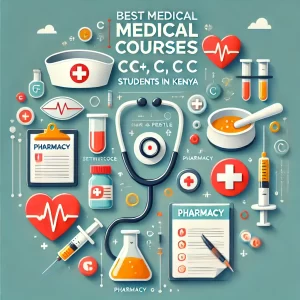Simulation Training has emerged as a transformative methodology in medical education, revolutionizing the way aspiring healthcare professionals acquire essential skills. In the context of Kenyan medical education, where traditional approaches have faced challenges, the integration of Simulation Training offers a promising avenue for hands-on learning. This case study delves into the impact of incorporating simulation training in Kenyan medical schools, highlighting the advantages and addressing potential hurdles.
Introduction: Nurturing Competence through Simulation Training
Simulation Training stands at the forefront of contemporary medical education, providing a dynamic learning environment that bridges the gap between theory and real-world practice. The immersive nature of simulations allows students to apply theoretical knowledge in simulated clinical scenarios, fostering competence and confidence crucial for their future roles as healthcare providers. In Kenya, a country grappling with limited resources and diverse healthcare challenges, embracing Simulation Training becomes imperative for ensuring that medical graduates are well-equipped to navigate the complexities of patient care.
Advantages of Simulation Training in Kenyan Medical Education
The incorporation of Simulation Training in Kenyan medical schools brings forth multifaceted advantages. Firstly, it enhances clinical skills acquisition by allowing students to practice procedures and decision-making in a risk-free environment. This is particularly significant in Kenyan medical education, where the scarcity of resources often limits the hands-on experiences students can gain in real clinical settings. Secondly, Simulation Training promotes teamwork and communication skills among future healthcare professionals. In a country like Kenya, where collaborative efforts are essential in addressing public health challenges, nurturing these skills is pivotal for fostering a cohesive and efficient healthcare system.
Overcoming Challenges: Implementing Simulation Training in Kenyan Context
Simulation Training presents a myriad of opportunities for enhancing medical education in Kenya, yet its seamless assimilation is confronted by a spectrum of challenges. The overarching impediments lie in the constraints of limited infrastructure and financial resources, casting formidable shadows on the establishment of state-of-the-art simulation centers within the precincts of medical schools across the country.
The exigency of the hour demands a meticulous approach to circumvent these impediments. It is imperative that a strategic plan be devised, fostering collaboration amongst educational institutions, governmental entities, and healthcare organizations. This collaborative effort is paramount for navigating the intricate landscape of challenges and surmounting the barriers that impede the effective integration of Simulation Training.
A pivotal facet of this strategic plan revolves around the imperative need to secure substantial funding for the development and sustenance of cutting-edge simulation facilities. The paucity of financial resources acts as a bottleneck, hindering the realization of fully-equipped simulation centers that are indispensable for comprehensive medical training. By orchestrating financial support from diverse sources, including governmental allocations, philanthropic endeavors, and private partnerships, the medical education landscape in Kenya can witness a transformative evolution.
Equally vital is the endeavor to empower the faculty with the requisite skills to adeptly harness simulation technology. A concerted effort should be made to institute training programs that not only acquaint educators with the intricacies of simulation but also empower them to leverage its potential to the fullest extent. This educational initiative will play a pivotal role in ensuring that the integration of Simulation Training is not merely a perfunctory addition but an intrinsic part of the medical pedagogy.
Furthermore, the exploration of international partnerships emerges as a promising avenue for augmenting resources and expertise. Collaborating with renowned international organizations that specialize in medical education and simulation can usher in a wealth of knowledge and resources. This symbiotic relationship can extend beyond mere resource sharing, encompassing the exchange of best practices, methodologies, and technological advancements, thereby fostering a holistic approach to medical education.
Leveraging technological advancements becomes a linchpin in this transformative journey. The advent of cutting-edge technologies can streamline the procurement of simulation equipment and software, making it more accessible and cost-effective. Embracing innovations such as virtual reality, artificial intelligence, and cloud-based solutions can revolutionize the landscape, obviating some of the logistical and financial challenges associated with traditional simulation setups.
In conclusion, while the promise of Simulation Training in Kenyan medical education is vast, the journey towards its integration is riddled with challenges. However, through meticulous strategic planning, collaborative efforts, and a multi-faceted approach that encompasses funding, faculty training, international partnerships, and technological innovations, these challenges can be effectively addressed. The envisioned outcome is a robust and dynamic medical education system that harnesses the full potential of Simulation Training, ultimately contributing to the elevation of healthcare standards in Kenya.
Impact on Student Engagement and Motivation
Simulation Training goes beyond traditional teaching methods, offering a more engaging and motivating learning experience for medical students. The interactive and hands-on nature of simulations captures students’ attention, making learning enjoyable and memorable. In the Kenyan context, where medical education often faces attrition due to various factors, the incorporation of Simulation Training can contribute to higher student retention rates. The excitement generated by realistic simulations not only fosters a love for learning but also instills a sense of purpose and commitment among students, motivating them to overcome challenges in their educational journey.
Enhancing Patient Safety: A Key Focus of Simulation Training
Patient safety is paramount in healthcare, and Simulation Training plays a pivotal role in instilling this ethos in medical students. By exposing students to simulated scenarios where errors can be made without real-world consequences, Simulation Training creates a safe space for learning from mistakes. In the Kenyan medical education landscape, emphasizing patient safety is crucial for improving healthcare outcomes. Simulation-based training ensures that future healthcare professionals are well-prepared to prioritize patient safety in their practice, contributing to a culture of continuous improvement in the country’s healthcare system.
Conclusion: Charting a New Course for Kenyan Medical Education
In conclusion, the incorporation of Simulation Training marks a transformative leap forward for Kenyan medical education. While challenges persist, the advantages of hands-on learning through simulations far outweigh the hurdles. By nurturing competence, overcoming challenges, and focusing on patient safety, Simulation Training not only addresses the current gaps in medical education but also prepares the next generation of healthcare professionals to tackle the unique challenges of the Kenyan healthcare landscape. The journey towards integrating Simulation Training into Kenyan medical education is a promising one, offering a beacon of hope for a more robust and effective healthcare system in the years to come.




